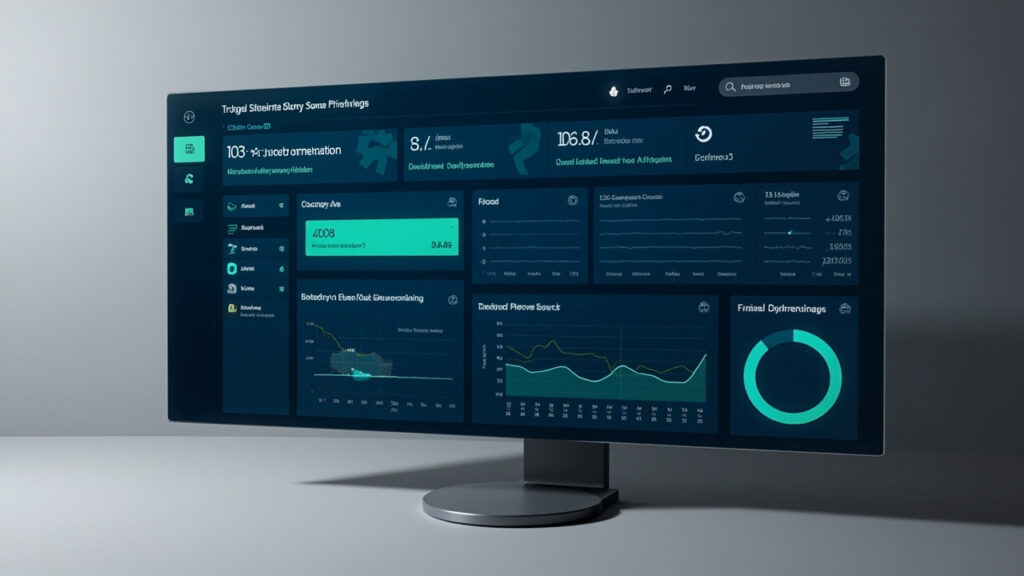In an era dominated by rapid technological advancements, the speed and reliability of software testing have become pivotal. Traditional testing methods, while thorough, are increasingly seen as too slow for the agile and demanding timelines of modern software development. This inefficiency not only delays product releases but also impacts the overall quality, potentially leading to a product that doesn’t meet the user’s evolving expectations.
In this article, we will delve deep into the challenges posed by slow testing processes and explore innovative solutions that can help overcome these hurdles. We aim to provide you with a comprehensive understanding of how cutting-edge technologies, especially AI-driven platforms like GenQE, are transforming the landscape of software testing. By the end of this read, you’ll discover actionable insights and strategies to significantly enhance the speed and efficiency of your testing processes, ensuring high-quality software delivery at a much faster pace.
The High Cost of Slow Testing
In the fast-paced world of software development, time is a commodity that cannot be wasted. Slow testing processes can be a major bottleneck, leading to several critical issues that affect not just the development cycle but also the business as a whole.
Impact on Time to Market
Slow testing processes extend the development cycle unnecessarily, delaying the product’s time to market. This not only puts a company at a competitive disadvantage but also affects its reputation and customer satisfaction. The longer the delay, the more opportunities competitors have to capture market share, and the higher the likelihood of diminished interest in the product once it finally launches.
Increased Development Costs
Longer testing cycles translate into higher costs. Resources are tied up for extended periods, and the longer a bug goes undetected, the more expensive it becomes to fix. The costs associated with delayed detection include not only the direct expenses of resolving the bugs but also the indirect costs such as additional testing and quality assurance, and potential penalties for missed deadlines.
Reduced Product Quality
In a bid to speed up releases, testing might be rushed or inadequately done, leading to software with potential defects making it to production. This can result in poor user experiences, negative reviews, and a tarnished brand reputation, which are often much costlier to repair than taking the time to test thoroughly.
The Need for Speed: Embracing Agile and Continuous Testing
Agile methodologies and continuous integration/continuous deployment (CI/CD) frameworks have been game-changers in addressing the speed constraints of traditional testing.
Agile Testing
Agile testing integrates testing into the development process, rather than treating it as a separate phase. This integration ensures that issues are identified and addressed early, significantly speeding up the testing process. It promotes a collaborative environment where developers, testers, and product managers continuously communicate and make adjustments, leading to a more efficient development lifecycle.
Continuous Testing
Continuous testing involves automated tests being run as part of the software delivery pipeline. This allows for immediate feedback and rapid correction of issues, accelerating the development cycle. It ensures that any changes made are immediately tested, reducing the chances of defects making it to production.
The Role of AI in Testing

Artificial Intelligence (AI) is set to revolutionize software testing by making it faster, more reliable, and less prone to human error.
AI-Driven Test Generation
AI can automatically generate test cases based on user behavior and application data. This not only speeds up the test creation process but also ensures that the tests are comprehensive and cover more scenarios. AI-driven test generation adapts to changes in the application, continuously evolving to meet new testing needs without requiring manual intervention.
Smart Test Execution
AI algorithms can prioritize test cases based on past data, focusing on those that are most likely to detect new errors, thereby optimizing the testing process. This targeted approach reduces the time spent on less critical tests and ensures that significant issues are identified early.
AI-Powered Defect Detection
By analyzing test results, AI can identify patterns and predict where defects are likely to occur, allowing teams to preemptively fix issues. This proactive approach helps in maintaining a high level of software quality throughout the development cycle, reducing the risk of costly post-release fixes.
Integrating GenQE into Agile Environments

GenQE stands out as a powerful solution designed to integrate seamlessly into agile environments and CI/CD pipelines. Here’s how GenQE can make a difference:
Seamless Integration with DevOps Tools
GenQE works fluidly with tools such as Jenkins, GitHub Actions, and Azure DevOps, ensuring that AI-powered testing is a cohesive part of the development workflow. This integration supports a unified approach to software development and testing, facilitating continuous improvement and efficiency.
Enhancing Test Automation with AI
By automating the generation and execution of test cases, GenQE reduces manual effort and speeds up the entire testing process, allowing teams to focus more on product development. The AI capabilities of GenQE ensure that the automation is intelligent, adapting to the evolving needs of the software and the business.
Self-Healing Automation
GenQE’s self-healing capabilities adjust to changes in the UI automatically, reducing maintenance time and keeping the testing process agile and efficient. This feature is particularly beneficial in dynamic environments where frequent updates and iterations are common.
Case Studies and Real-World Success

Let’s examine a few case studies where AI-driven testing platforms like GenQE have significantly improved testing speed and efficiency:
Case Study 1: Large Financial Institution
A major bank integrated GenQE into their CI/CD pipeline, reducing their testing cycle time by 40% and catching defects 30% earlier than with traditional methods. The integration allowed the bank to enhance its digital offerings faster, improving customer satisfaction and competitive positioning in the financial sector.
Case Study 2: E-commerce Giant
An e-commerce leader used GenQE to automate their mobile and web testing, which allowed them to deploy new features daily without compromising on quality. The rapid testing and deployment capabilities provided by GenQE enabled the company to quickly adjust to market demands and consumer preferences, significantly boosting its market agility.
Conclusion: Accelerating Forward

The war against slow testing is not just about adopting new tools but about transforming mindsets and processes to foster a culture of efficiency and quality. AI-powered testing platforms like GenQE are at the forefront of this revolution, offering solutions that not only speed up the testing process but also enhance its effectiveness.
As we look to a future where software development cycles continue to shorten, integrating advanced tools like GenQE can be a strategic move for any organization aiming to stay competitive and agile in a fast-evolving digital world.
Explore how GenQE can transform your testing strategy and help you win the war against slow testing. The future of efficient, intelligent testing is here. Are you ready to step into it?
Discover More Innovative Solutions
Want to learn more about the tools and technologies discussed in this article? Explore how these innovations can be tailored to your specific needs and workflow requirements.
Our team of experts is available to answer your questions and provide personalized insights into how modern solutions like GenQE can address your specific challenges.